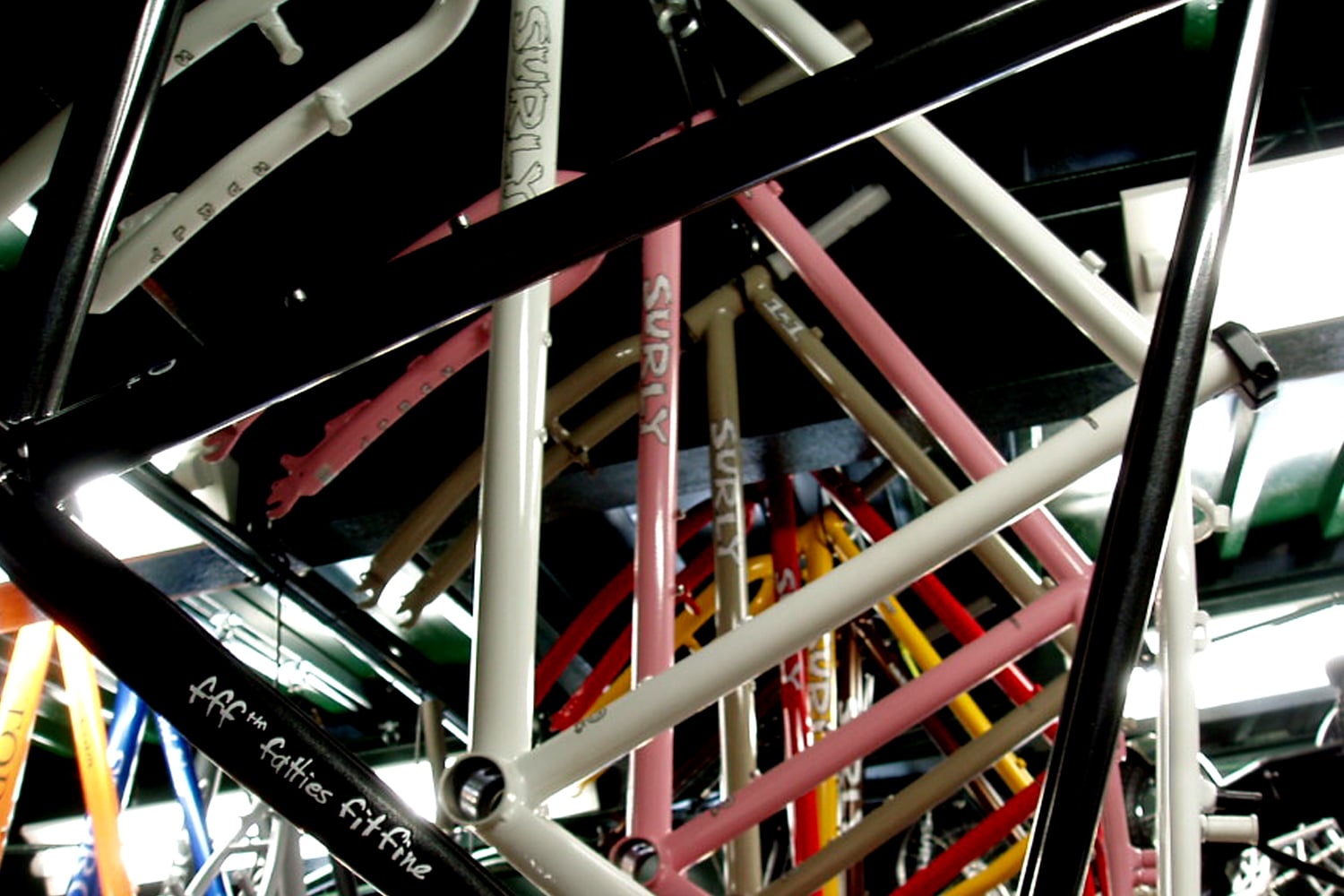Trolls are going into stock around the planet, and trailers should be here in February. So I thought it might be Minnesota nice to tell you a little bit about these two items in case you might be considering them for your own fleet.
TROLL
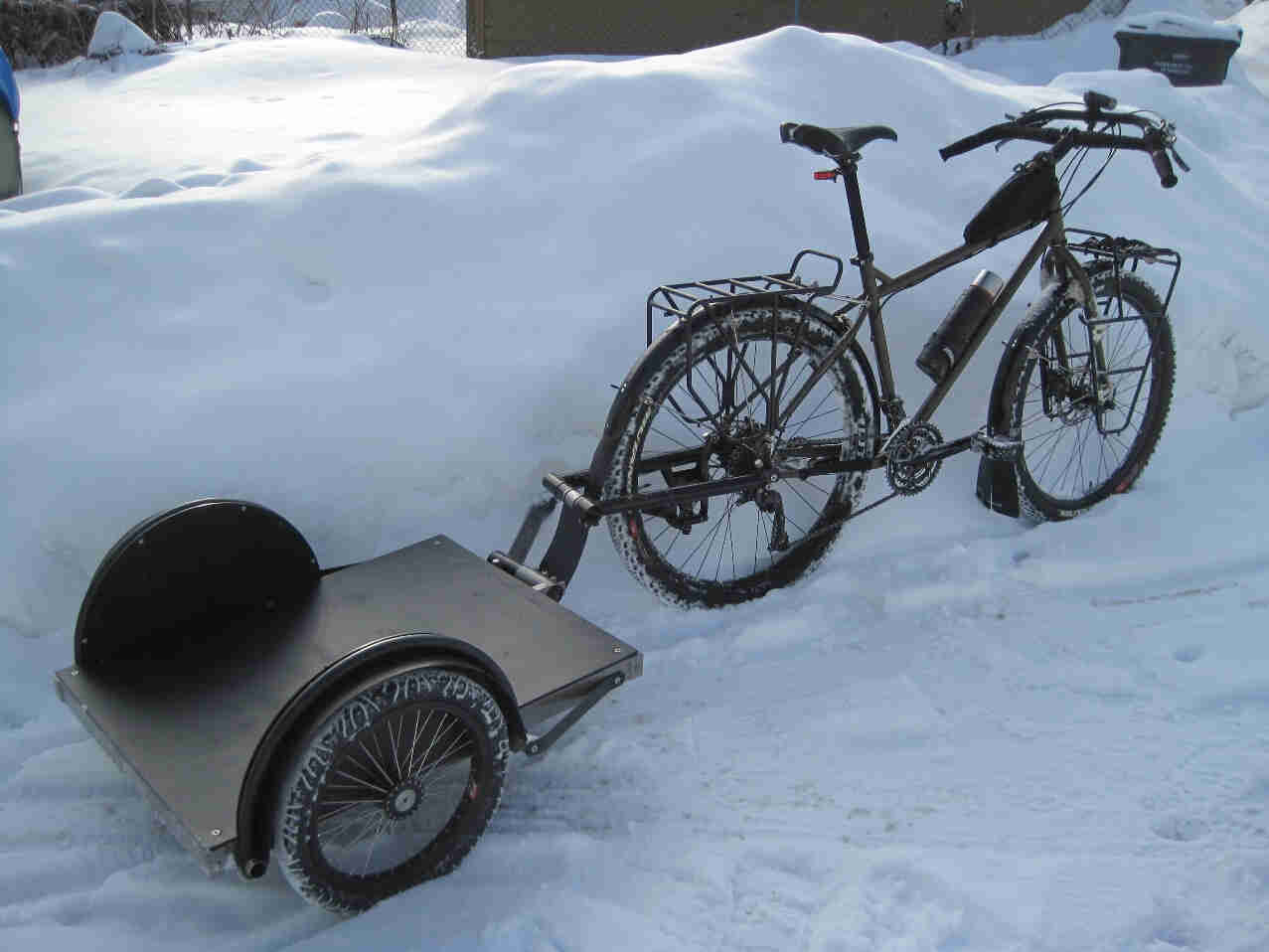
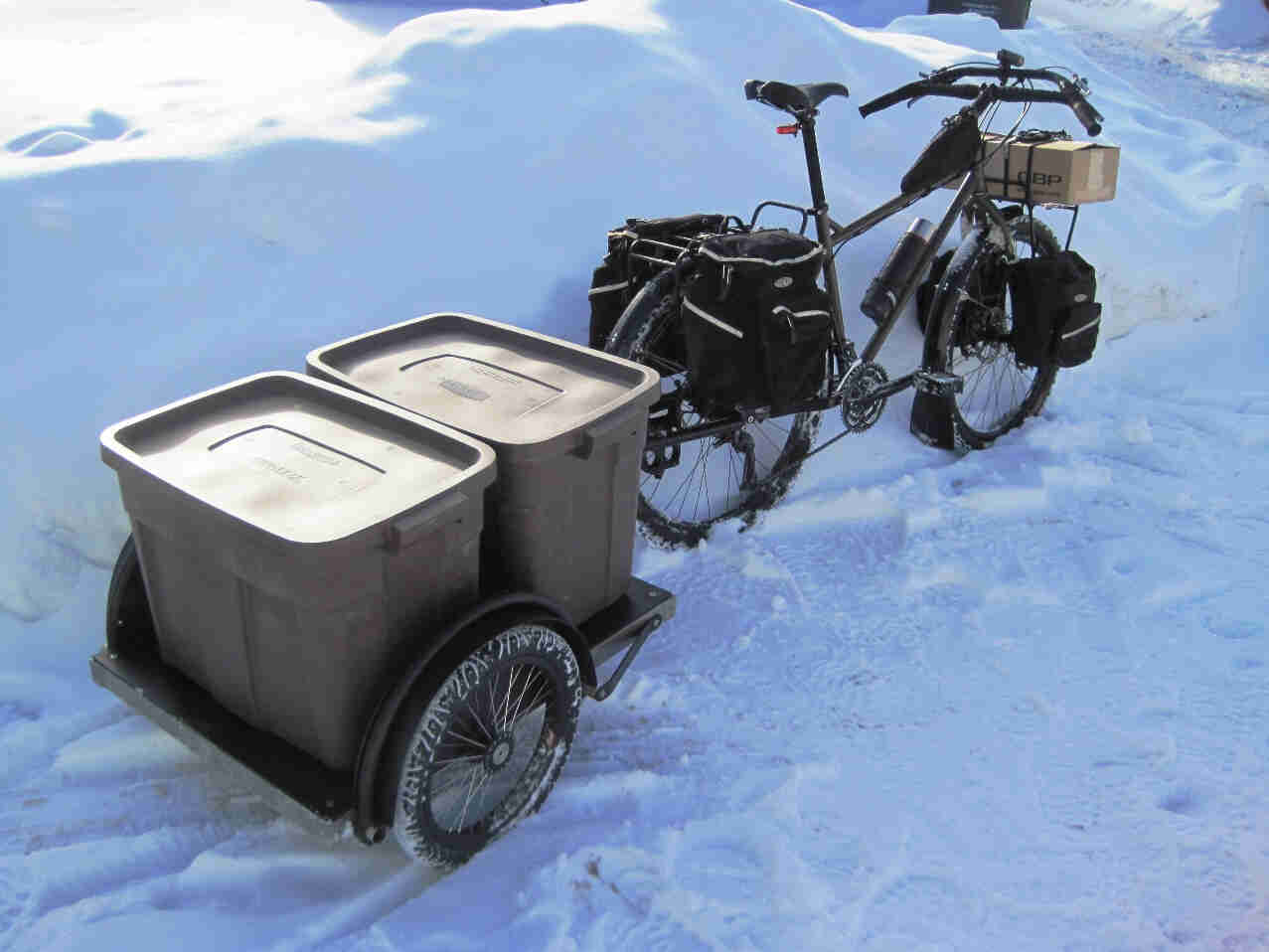
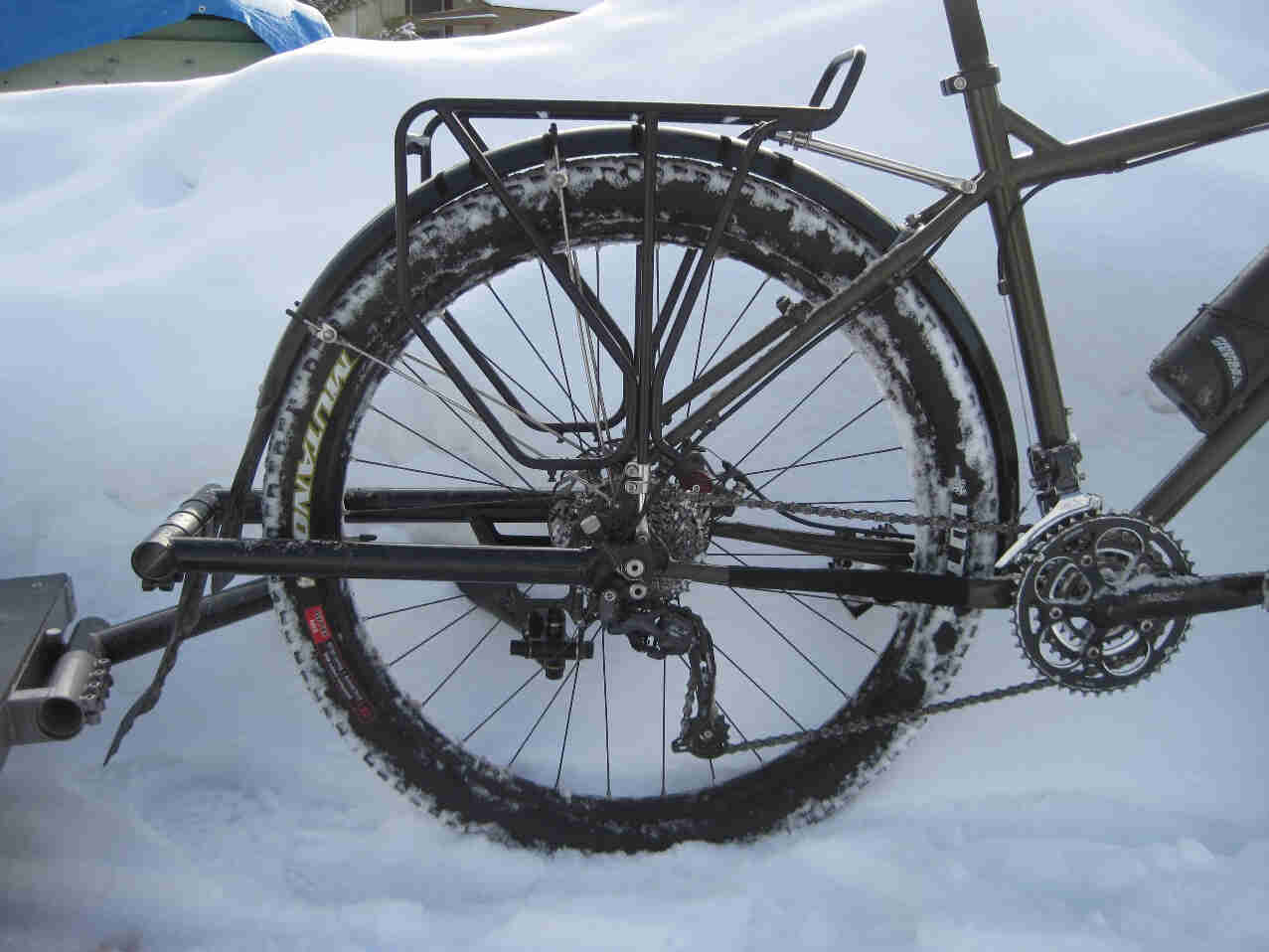
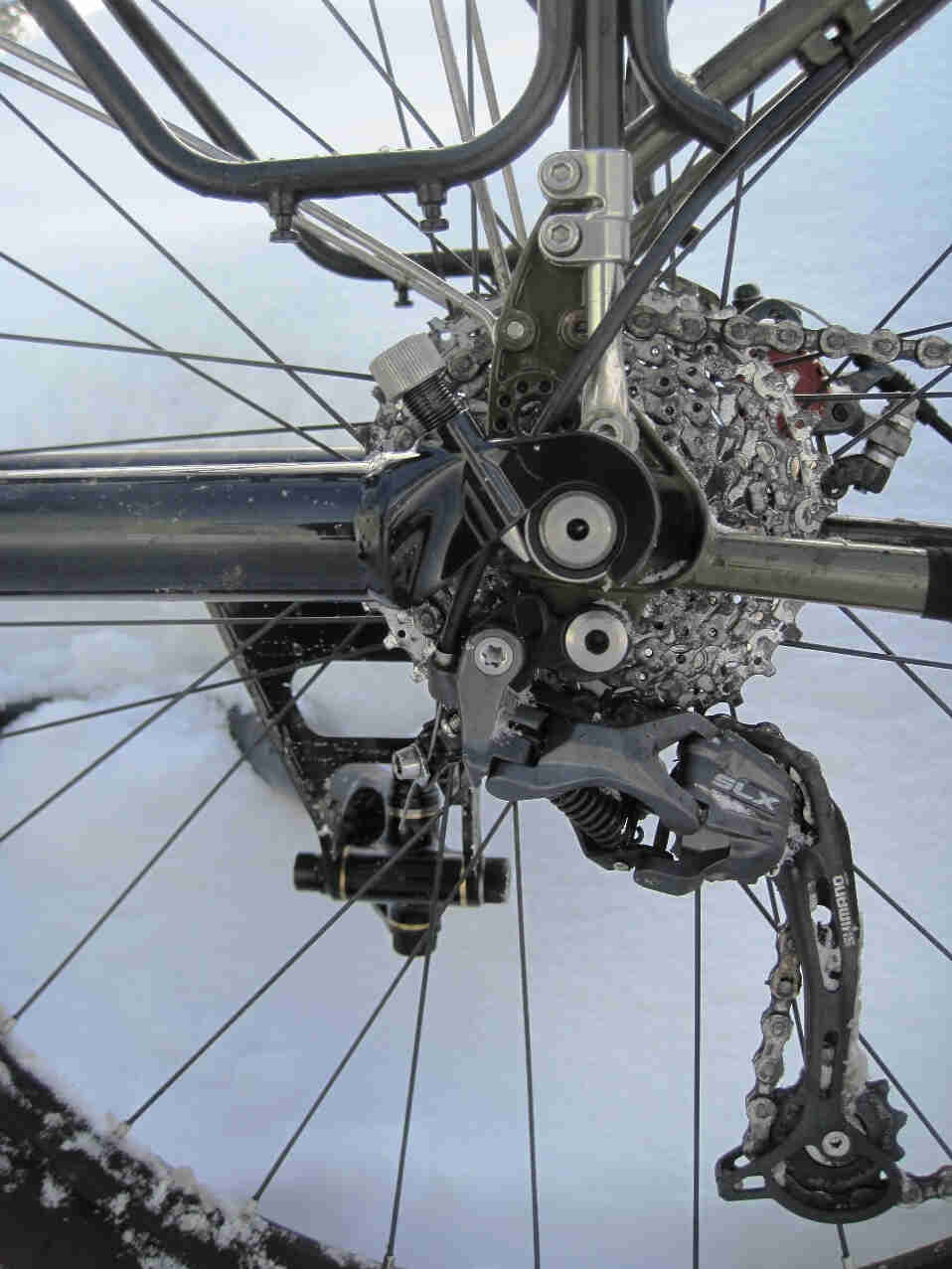
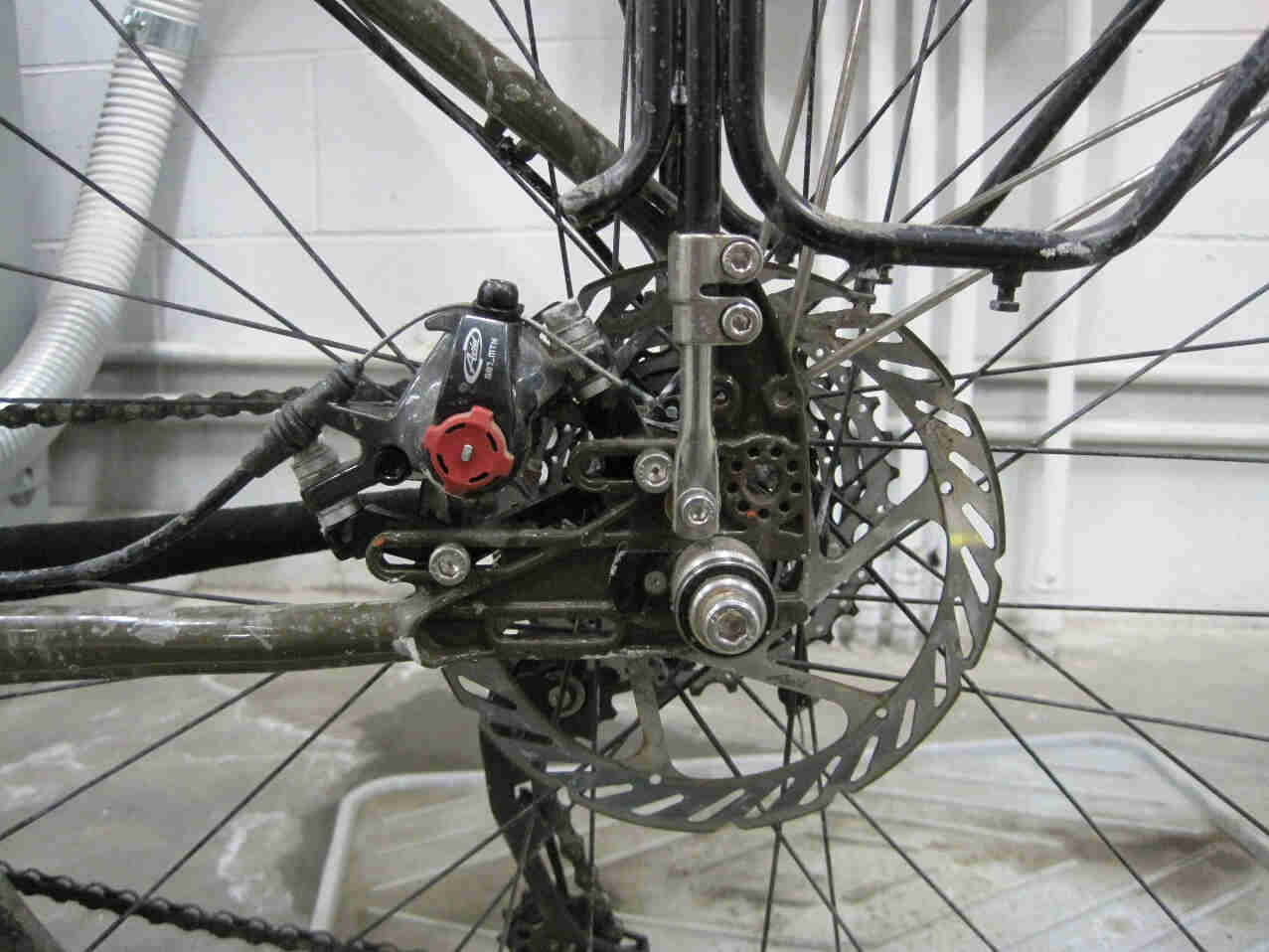
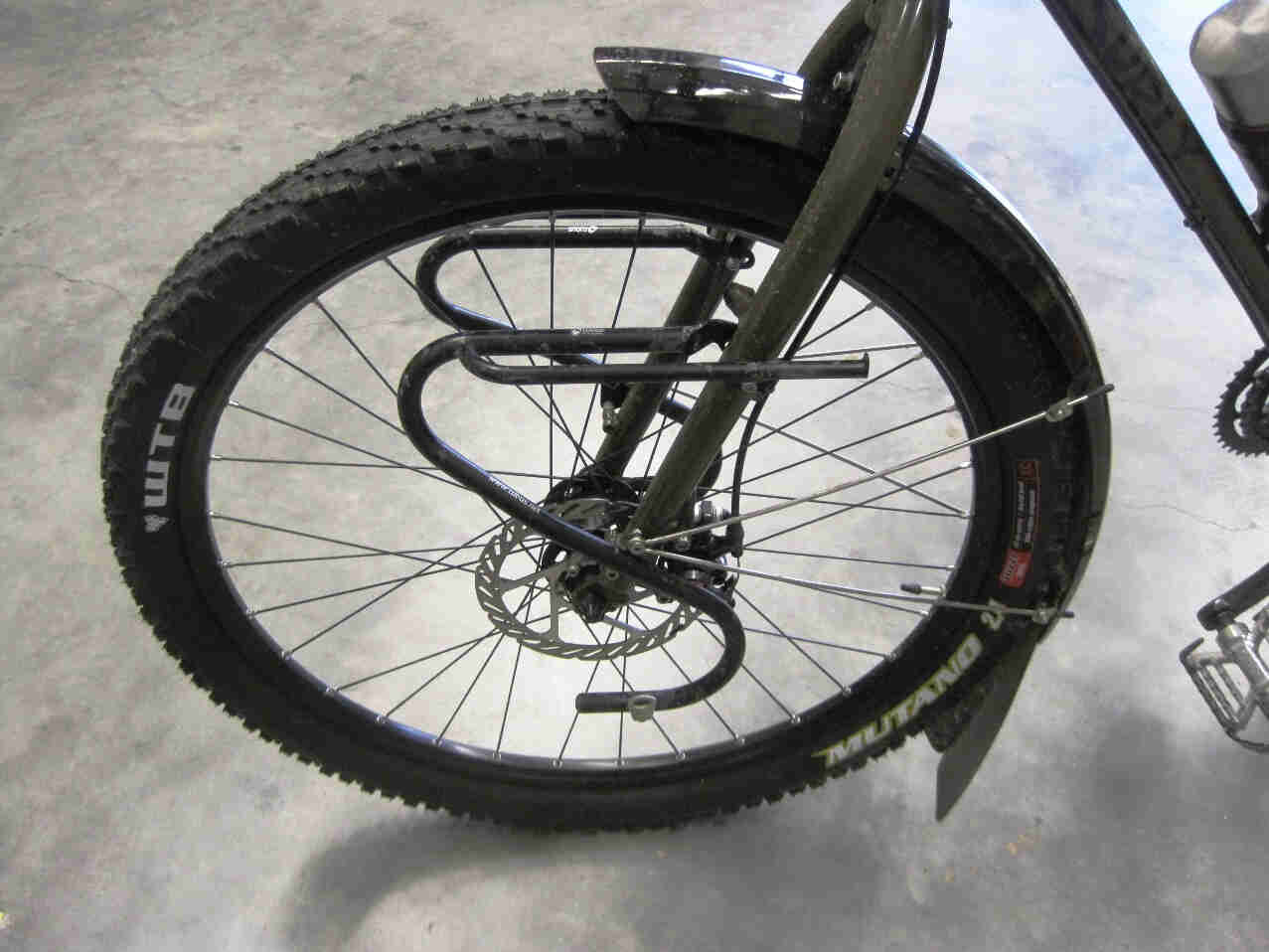
Pictured above is a production Troll in a non-stock hue (cuz I like that color when I'm hiding in the woods) with a short Surly trailer (some of us refer to it as Ted, the longer trailer as Bill), Surly racks, SKS P65 fenders, 26 x 2.4 WTB Mutanoraptors, and Avid BB7 mechanical disc brakes. This isn’t a combo that most frames can accommodate, but the Troll accepts it lovingly.
It is possible to pull the trailer while using low-to-medium volume panniers on the rear rack.
I included a pic with Tubus lowrider racks to show happy compatibility. These are sweet racks, BTW. I use them on- and off-road. If you don't need a deck above your panniers, check 'em out.
My Troll drivetrain is a pretty standard 3 x 9 set-up…11-34 cassette with a stock 22/32/44 Mr. Whirly crankset. Thumbies move the SRAM chain via the SLX front and rear derailleurs. Everything is rolling on XT 6-bolt hub and WTB hoops.
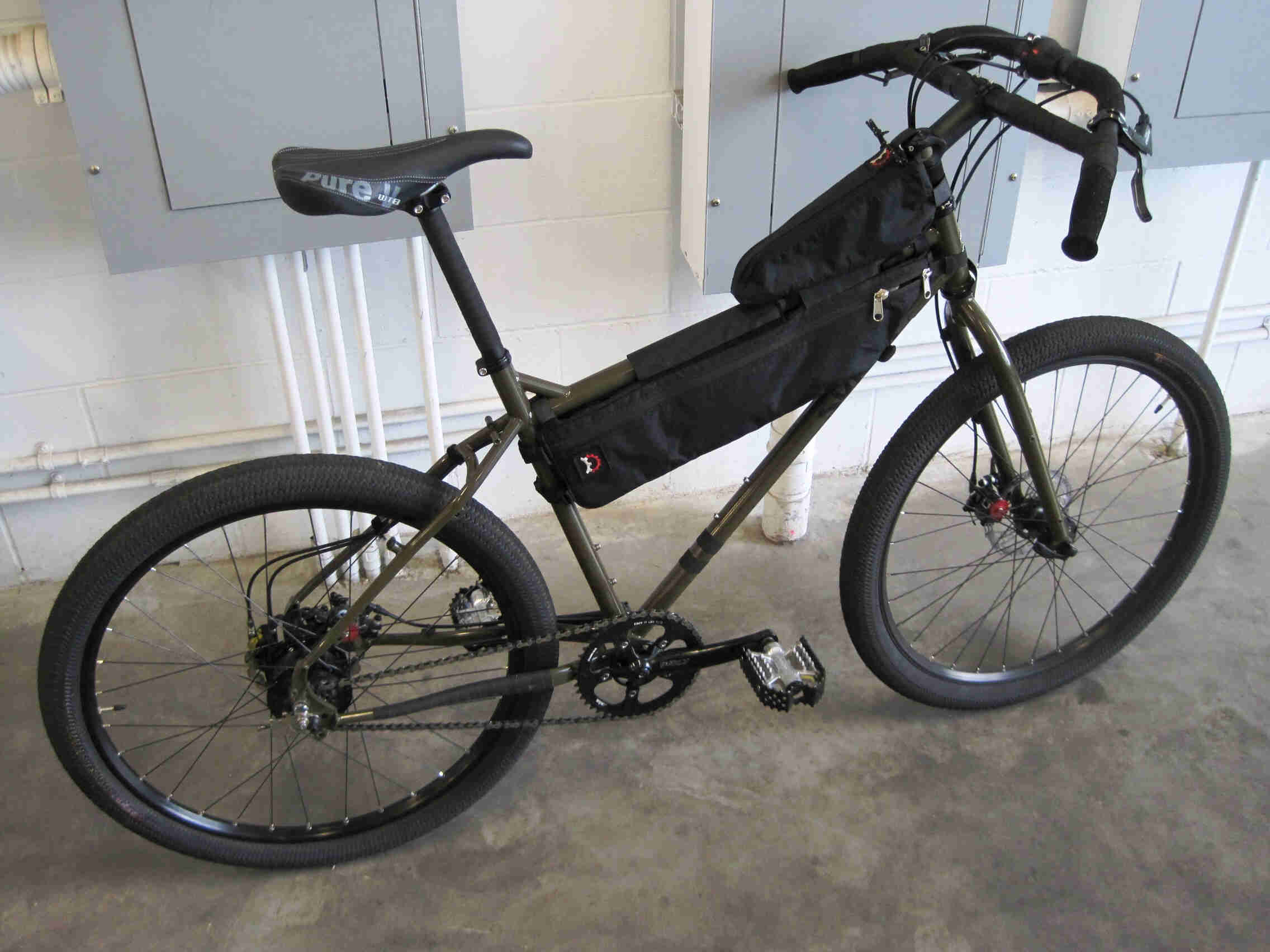
I’ve already put in a lot of saddle time on the pre-production Troll frameset I received in June (same color...RAL 6014...as the newest sample)…built up initially with the 3x9 drivetrain and now in Rohloff mode. No fenders or racks. Kenda Kiniption tires rail the corners on pavement and hold their own on hardpacked dirt. I usually rely on Revelate Designs frame bags to carry commuting and camping gear on this bike. I can quickly install the Tubus lowrider racks if I need a little extra carrying capacity.
The new (production) frameset has seen about 410 mostly-commuting kilometers (250 miles) on snow-and-ice-covered roads in the last 2 weeks, with and without Ted in tow. I’m riding the Troll to torture-test and evaluate it, and I’m riding it because I truly enjoy riding it. Like much of the US, we are getting loads of snow. The wide, aggressive rubber is not overkill in these conditions. When given a choice (often dictated by the size and shape of the cargo), I'll bias my cargo weight over the front wheel to keep front-end wash-out to a minimum on the slippery roads and bike paths that make up my routes.
The geometry was taken from the 1x1, so it’s tried and true. Like the updated 1x1, the frame accepts 100mm-travel suspension forks if you want squish.
We expect the Troll to be used in many ways: road touring, off-road riding, commuting, cruising, and pulling assorted sundries on trailers. I’ve used it in all of these capacities already. This bike can be lots of things to lots of folks. And it offers the versatility to change drivetrain and brake formats appropriate to your needs and/or budget. We think it will work nicely for many of you.
TED
Our 3+-year trailer design odyssey is finally bearing fruit…trailer fruit. You should try some trailer fruit in your best trailer fruit suit.
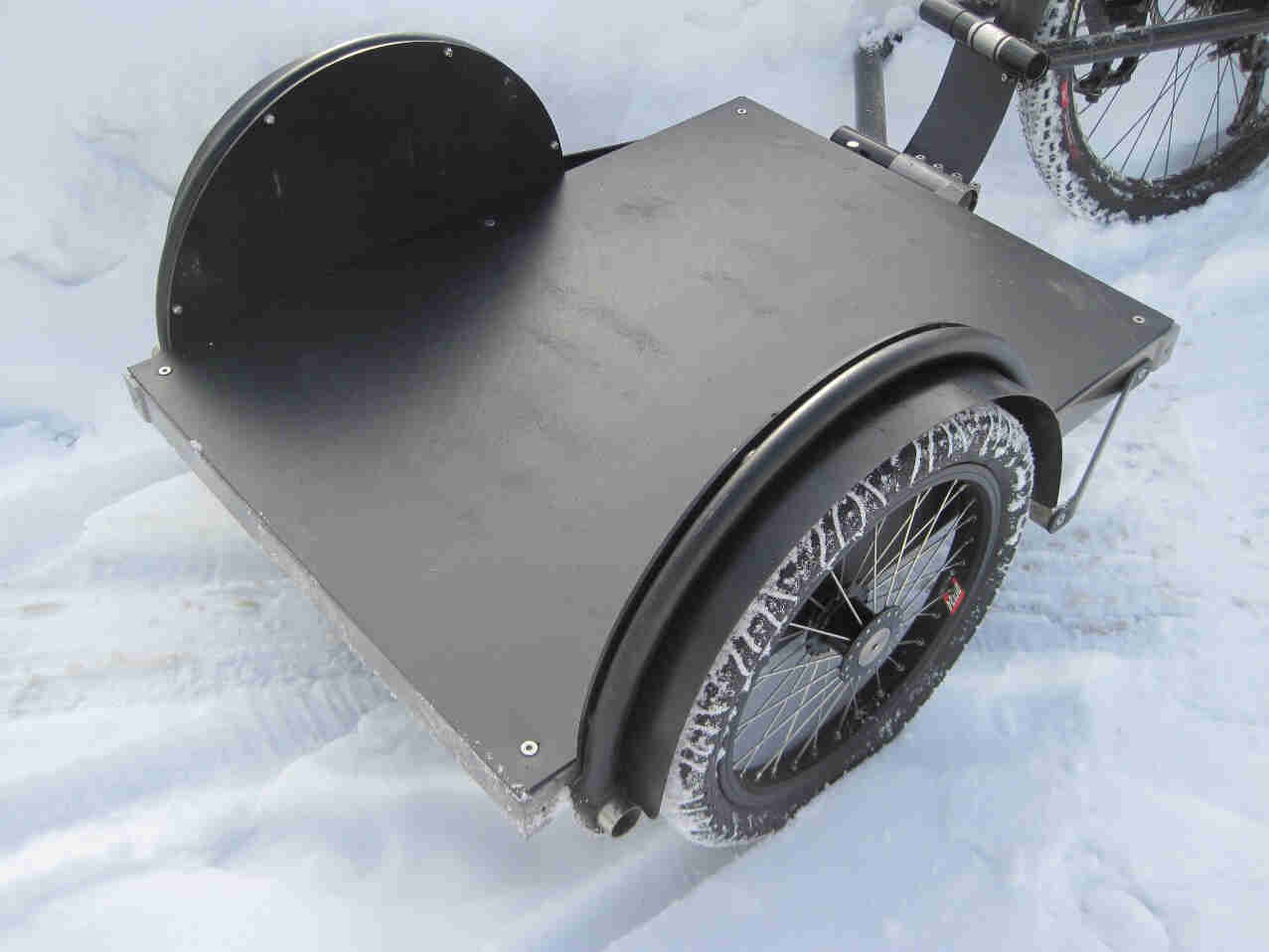
Recycled HDPE fenders, spoke guards, and deck adorn Ted in the photos. We are sourcing these locally, and we hope to have them available in the near future. In the mean time, you might want to consider making your own decks, fenders, and spoke guards with wood, metal, or plastic sheet. We’ve provided all the threaded bosses on the bed and on the included clamp-on tubular aluminum wheel covers. Cut the sheet material. Drill some holes. Bolt it on. We suspect we are going to see some pimped-out custom trailer set-ups after we’ve let you play for a while.
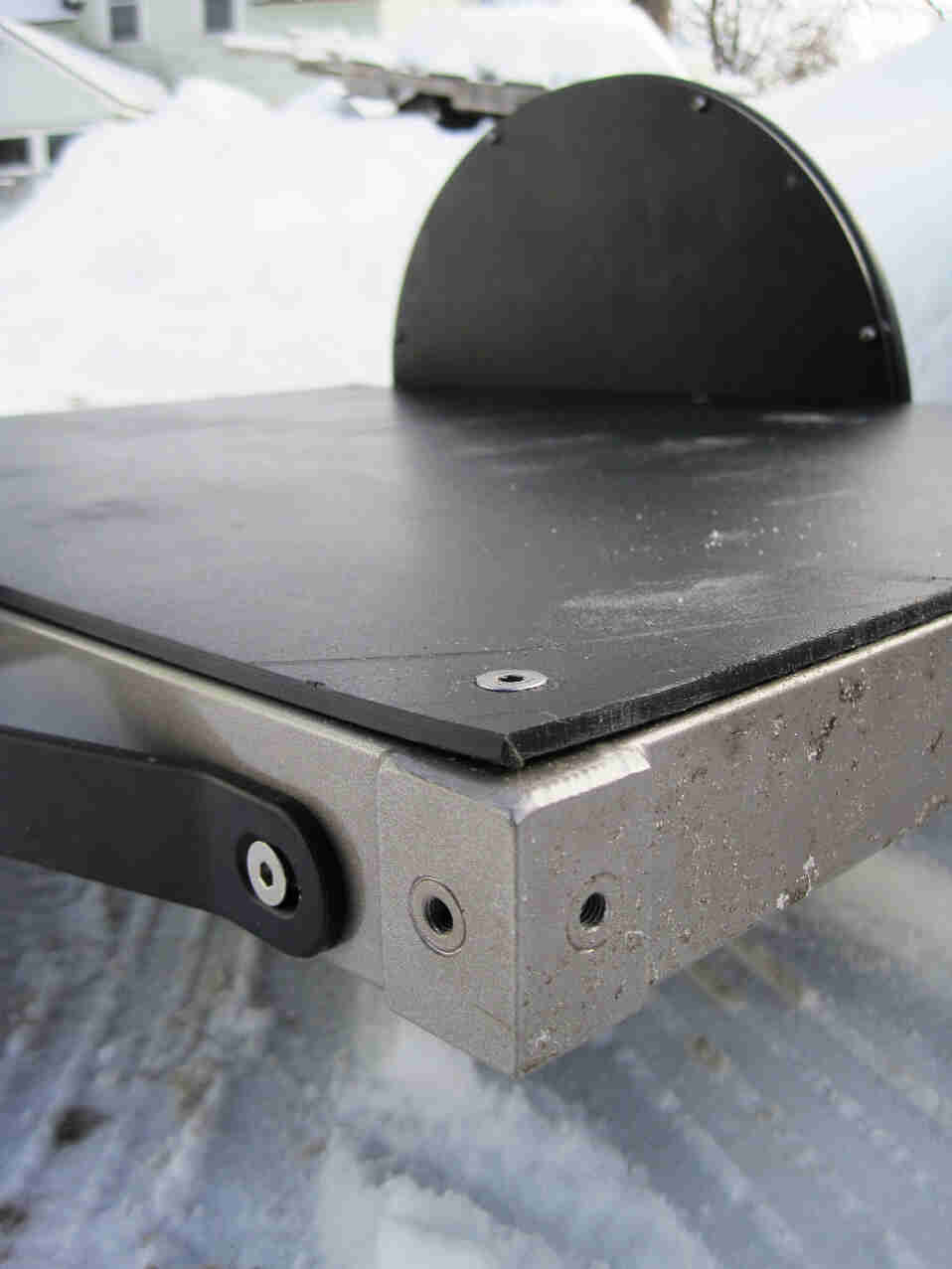
The corners feature threaded M6 bosses for bolting on corner stakes or sideboards. We’ll likely offer these accessories in the future, but don’t wait for us. Go to the hardware store or dig around your garage or basement, and make some stuff. Don't be scared. You can do it. You're pretty. I like that haircut. Just kidding.
Rubbermaid Roughneck totes were considered when finalizing trailer bed lengths. Ted will haul two; Bill will haul four of the totes. You can procure these through hardware stores and department stores. Of course, both beds will haul more if you stack the totes. Just don’t stack ‘em too high. You want to keep your weight low, so your trailer doesn’t tip when cornering at speed. Yes, you will corner at speed. Quit doubting yourself. You're a freakin' dynamo!
The width of both beds is 610mm (24”). In the US, sheet stock is often available in this width or in multiples of it. Our beds are wide, but the wheels are nicely tucked in. So our trailers fit through doorways. Included bash guards (the widest parts of the trailer) deflect the trailer before the fronts of the wheels can smack anything, so there’s less likelihood of a crash or dead-stop if you happen to get a bit too close to an immovable object. We're striving to prevent abrupt meetings of genetalia and bike stems. You're welcome.
Our 2-sided hitch fixtures on the included axle skewer or on accessory threaded axle nuts. The trailer won’t touch your frame, so you don’t have to worry about tube or finish damage at the bike/trailer connection area. It works on bikes with full-suspension, disc brakes, thin frame tubes, and many of the other bike attributes that complicate installation of other hitch systems. The mechanism is simple, so there isn’t much to break or lose. It doesn’t work with the Big Dummy yet. We have a plan for that, but it won’t be available right away. Our skewer and hitch yoke (the U-shaped thing that goes behind the tire) adjust for the width of your frame as long as the frame accepts hubs within the 120 – 145mm range. The vast majority of you will likely be right in the middle…130 – 135mm. It doesn’t work on fatbikes (including the Pug) either, because that compatibility created too many compromises for non-fatbike trailer-pullers. The hitch yoke is a separate assembly, so we can offer wider yokes in the future if enough fatbikers want to pull our trailers. I suppose we'll have to build pair of trailer skis at some point.
BOOM!!! The boom runs from the pivot to the trailer frame/bed. Our boom curve gives you max tire/boom clearance for tight-radius turns. The boom is height-adjustable, so you can level the trailer bed regardless of the diameter or the bikes rear wheel (20” – 29”). It adjusts horizontally, too. So you can center your bike’s rear wheel on the center of the trailer bed, regardless of the width of the bike’s rear hub. It trails best there, and you’ll have a better sense of where your trailer is while you’re threading your way through the tight stuff.
Our 16” 32-spoke wheels are tough and light, and their height naturally keeps the cargo mass low to the ground. We designed our own hubs, which ride on removable/replaceable 20mm chromo thru-axles, because we want to keep our trailers narrow while providing lots of cargo space. And we want hubs that would work well with small-diameter rims. Pre-existing hubs wouldn't do. Our hubs lend themselves to bomber wheels when laced to double-wall Alex DM24 aluminum rims using stainless steel spokes and brass nipples. And we’ve found that the 16 x 1.95 Maxxis Hookworm tires take lots of abuse, but roll well.
Where appropriate, the steel bits on our trailers are stainless…hardware, spokes, and exposed tubing, because stainless steel resists corrosion. Rusty hardware looks ugly, and it’s more likely to seize onto/into mating threads. We ride year ‘round in a place that loves to salt the roads when the snow flies. Metals tend to corrode even faster in these conditions. Ocean air may expedite the corrosion process, too. The trailer beds are not stainless, so we recommend treating their interiors with some type of water-resistant coating…J.P. Weigle’s Framesaver, boiled linseed oil, engine fogging oil, Boeshield, etc. Almost any type of oil is better than nothing. Same thing with your steel bike frame. Treat ‘em nice and they will love you long time.
There are several reasons why we use chromo steel for the bed material: We can repair it or modify it without post-weld heat treatments. It rarely fails catastrophically. It’s tough like Thor. And it’s a material we know and love. We welded the frame, in lieu of bolting it together, because it tends to be stronger and quieter that way. Some of you have pulled creaky, flexy trailers. Sucks...doesn't it?
Bill and Ted will haul 135kg (300 lbs) of properly-loaded goods. We designed for this hauling capacity, because it seems like an acceptable range for most bike trailer uses. And as capacity goes up, so does trailer weight. We had to find a balance, here. We’ve carried more weight, but it stops being fun at a certain point. Over-loaded and improperly-loaded trailers are dangerous, because they are harder to maneuver and stop. We suggest using a trailer puller (think of it as a tractor) with disc brakes. Rim brakes work fine in most conditions, but you may not have as much power and control, compared to discs, at speed or in wet conditions. That's all. Just be aware of it. Center the load weight over the trailer axle as much as possible, while keeping that weight low. Yes, that's the second reminder to keep the weight low. Max tongue weight (the downward force at the bike's axle) should not exceed 23kg (50 lbs). The trailer behaves best when there is minimal tongue weight on the hitch. But avoid negative tongue weight...too much weight BEHIND the trailer axle. You don't want your trailer lifting your back wheel off the ground for you. Most of you will be propelling and stopping your bike/trailer rig using the rear wheel. That only works when your tire is firmly pressing its bad self against the road or trail. Really. I didn't even make this part up. Embrace the physics, and everything is going to be just fine.
That's all I can think of for now. So chew on that for a while, and check out these products elsewhere on our website. Feel free to e-mail or call us, if you have questions we haven’t answered. Be kind, and we'll answer you promptly and honestly. If you come off like an angry, know-it-all tool, your reply will likely be delayed. If you politely tell us what you think of our our products, our customer service, and anything else that we do or do not do to your liking, we will seriously take your thoughts and wishes into consideration. We can always do better in every regard. Who can't? And we will love you for being cool and helpful. Most of you are cool and helpful. Thank you for that.
 Surly Bikes
Surly Bikes